Jeju Island (Seogwipo-Jeju City, Korea)
Cruise Port schedule, live map, terminals, news
Port Jeju Island cruise ship schedule shows timetable calendars of all arrival and departure dates by month. The port's schedule lists all ships (in links) with cruises going to or leaving from Jeju Island, Seogwipo-Jeju City, Korea. To see the full itineraries (ports of call dates and arrival / departure times) and their lowest rates – just follow the corresponding ship-link.
| Day | Ship | Arrival | Departure |
|---|---|---|---|
| 12 March, 2025 Wednesday | 07:00 | 15:00 | |
| 13 March, 2025 Thursday | 07:00 | 15:00 | |
| 14 March, 2025 Friday | 12:00 | 21:00 | |
| 16 March, 2025 Sunday | 09:00 | 18:00 | |
| 18 March, 2025 Tuesday | 08:00 | 14:00 | |
| 21 March, 2025 Friday | 07:00 | 13:00 | |
| 22 March, 2025 Saturday | 10:00 | 20:00 | |
| 23 March, 2025 Sunday | 07:00 | 16:00 | |
| 29 March, 2025 Saturday | 08:00 | 18:00 |
Jeju Island (aka Jeju-do/Cheju-do) is located in Korea Strait, approx 130 km (80 mi) to the south of mainland South Korea. Jeju is among the country's top island resort destinations and is often referred to as the "Chinese tourist mecca " due to its huge popularity among tourists arriving from China.
The island has total area approx 1848 km2 (714 mi2), population around 0,6 million, and two port cities - Jeju-si/Jeju City (north) and Seogwipo-si/Seogwipo City (south). Both Seogwipo and Jeju have dedicated cruise port terminals, respectively, Jeju International Passenger Vessel Terminal (ferry and cruise) and Seogwipo Gangjeong Cruise Terminal.
Jeju Port's locode is KRCHA.
Seogwipo Port's locode is KRSPO.
Currently, South Korea has 4 cruise ports with all 5 international passenger terminals - Jeju, Sokcho, Incheon and Busan.
Near Port Jeju are the old downtown and traditional Korean markets. Tourists have easy access to various natural UNESCO-listed sites and other popular attractions with gorgeous scenery such as Gotjawal (wild forest) and a beautiful beach, among others.
The island's largest settlement is Jeju City (population around 400,000) located on the central-northern coast. In 2016, Port Jeju handled a total of 534 cruise ship calls. In 2016, South Korea was visited by ~2 million cruise ship tourists (~130% increase over 2015). The country was included in a total of 811 cruise itineraries, of which 534 to Jeju, 215 to Busan, and 62 to Incheon-Seoul.
Due to the COVID crisis, Port Jeju paused its cruise shipping operations for 2 years (February 2020-2022).
The island has a designated World Heritage Site - "Jeju Volcanic Island and Lava Tubes". Jeju is Korea's largest island. It is of volcanic origin and is home to Hallasan (South Korea's tallest mountain) right at its center. Scattered across Jeju are 70+ smaller volcanoes (aka oreum). Jeju is globally popular for its natural beauty, including isles, volcanoes, waterfalls, beaches, dense forests, parks, caves. The island is designated by UNESCO as Biosphere Reserve (2002), World Natural Heritage (2007) and Global Geopark (2010).
The climate is temperate - even in the winter, temperatures rarely fall below 0 C (32 F). However, in January 2016, a cold weather front affected the island. The snow forced the cancellation of around 1200 flights, stranding around 90,000 passengers.
The island is served by Jeju International Airport (South Korea's 2nd largest - after Incheon). Regularly scheduled domestic flights are operated between Jeju City and Seoul (Korea's capital city). This air route is the world's busiest, with 10+ million passengers being flown between both cities annually.
Popular tourist attractions and places on Jeju Island include Seongsan Ilchulbong ("Sunrise Peak"), the 8 km (5 ml) long Manjanggul Lava Tube (1-km publicly accessible), Mount Hallasan (highest elevation point - 1950 m / 6400 ft), Teddy Bear Museum, Seongeup Folk Village, Jeju Loveland (sex-themed sculpture park).
Jeju Naval Base (officially "Jeju Civilian-Military Complex Port") was completed and opened in February 2016. Construction works started in 2007. The project's total cost was USD 907 million.
- The base is located near Gangjeong (on the island's southern coast). Its pier capacity is 20 warships, 3 submarines plus 2 passenger cruise liners (GT tonnage up to 150,000 tons).
- The base's construction was halted several times by local protesters concerned about its environmental impact. The protesters also saw the base as a USA-driven military project aimed at China.
On March 11, 2017, the liner Costa Serena docked at Jeju port in the afternoon. However, all passengers (over 3,400) refused to disembark, while at the cruise terminal, customs officers, tour guides and ~80 buses were waiting for them.
- The Chinese cruise tourists remained on the ship for 4 hours before the vessel departed Jeju back to port Tianjin. The ship was privately booked and all passengers received the cruise vacation as a reward organized by a Chinese company. The ship had departed on this exclusive itinerary from port Fukuoka Japan.
- The incident contributed to the Costa Asia company's cancellation of all scheduled port visits to Jeju Island (in the period March-June 2017), which included 26 ship calls and around 120,000 booked Chinese passengers.
- In March 2017, all the world's largest cruise companies (RCCL Royal Caribbean, Carnival Corporation, Costa Asia and Princess Cruises) also canceled ship calls to South Korean cruise ports and replaced them with Japanese ports of call.
- These decisions were due to the rising diplomatic tension between China and South Korea over the installation of the US Army missile defense system THAAD ("Terminal High Altitude Area Defense") on South Korean territory. This is an anti-ballistic missile system designed to intercept and shoot down medium-range and long-range missiles. Beijing's anger was over a joint South Korea-USA plan to set up THAAD missile system in the country. Officially, the missile system is against North Korean nuclear missiles. According to Beijing, this far-reaching radar system targets China.
Official statistical data (reported by Korea's Ministry of Maritime Affairs and Fisheries) for 2016 showed that a foreign cruise passenger spends on average nearly USD 890 (on tours / excursions, shopping, food, drinks, services).
Jeju Island cruise terminal
Most cruise ships to Jeju Island (Jejudo) dock at Jeju Port located on the island's northern coast. The cruise port is located approx 2 km (1,2 ml) from the city. Arriving cruise passengers are greeted with a traditional folklore show by local performers. Close to the pier (20-25 min walking distance) there is a small shopping/dining area.
Since 2016, alternative docking is offered at the new Jeju Naval Base near Gangjeong (on the island's southern coast). The base has 2 piers dedicated for cruise ships.
Some cruise ships may dock at Seogwipo Port (locode KRSPO) which is on Jeju's central-southern coast nad serves the island's second-largest city.
Tourists visiting Jeju must plan their land tours depending on the ship arrival/call port (Jeju Port or Gangjeong Port). For taxi use, it is convenient to download and activate mobile apps (like K-ride or Kakao T) in advance. You can use public Wi-Fi at tourist spots, bus stops, and buses to search transportation routes with Google or Baidu. Visitors booking group tours can reserve a tour taxi (called Global Taxi, with foreign language services) online (jeju.go.kr/globaltaxi/kor/index.htm). At Visit Jeju, tourists can additionally ask questions about touring the island via the website's multilingual chat service.
The island's main modes of transportation are the city buses and taxis - no subways or trains.
The JejuBus app provides information on all bus routes and real-time locations. The app is available in Korean, English, Chinese, and Japanese.
- Red buses (numbered in the 100s) offer a speedy connection between Jeju's four main points.
- Blue buses (numbered in the 200s, 300s, and 500s) serve both intercity and innercity routes.
- Green buses (numbered in the 400s, 600s, and 700s) serve shorter routes.
- Airport Limousine buses are a transit airport-Seogwipo travel option, making limited stops along the way.
On Jeju Island there are three main routes - 600, 800, and 800-1.
Route 600 (from Jeju Airport to Seogwipo KAL Hotel) passes through the Jungmun Tourist Complex.
Route 800 (from the Airport to Seogwipo Bus Terminal via Seogwipo Innovation City) and route 800-1 (from the airport to Seogwipo Central Rotary) are served by Limousine buses, but passengers must inform the bus driver of their destination before tapping their ticket.
(NEW) Jeju Cruise Port Terminal
Jeju Cruise Port is the newest (2012-opened) and has one Quay (length 390 m/1280 ft, max water depth 12 m/39 ft) providing berthing capacity of one cruise ship with GT-tonnage/volume under 80,000 tons.
Currently, South Korea has 5 international cruise terminals - two in Jeju, one in Sokcho, one in Incheon, and one in Busan. In late August 2019, the country's Ministry of Oceans and Fisheries announced its plan to open a new Jeju Port dedicated to inbound/international cruise ship tourists.
The endorsed budget for this (Jeju's 3rd) cruise terminal was KRW 2,8 trillion (USD 2,3 billion).
The new cruise-dedicated harbor port is on Jeju Island's northern coast, including areas in Samdo-dong, Geonip-dong, and Yongdam-dong.
The project's scheduled completion is by year 2040.
When the 3rd terminal is completed, the island's total annual passenger capacity will be ~4,7 million tourists.
In 2019, Incheon inaugurated the Songdo International Cruise Terminal.
Seogwipo Gangjeong Cruise Port Terminal
The 2017-opened Seogwipo Gangjeong Cruise Port is on Jeju Island's southern coast.
Currently, Seogwipo Cruise Port has one Quay (length 420-690 m/1378-2264 ft, max water depth 16-17 m/52-56 ft) providing berthing for two 2 cruise ships docking simultaneously. Each vessel must be with GT-tonnage/volume under 150,000 tons.
Near Port Seogwipo are the Jungmun Tourist Complex (spanning across Jungmun-dong, Saekdal-dong, and Daepo-dong). The large resort area consists of multiple accommodations and tourist attractions, pristine nature and Seogwipo City downtown's shopping districts.
- Cruise Industry
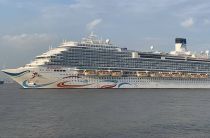
Adora Cruises announces 2025 Summer itineraries from China to Japan and Korea
Adora Cruises Ltd. has announced the launch of two summer itineraries for its cruise vessels, with the domestically built Adora Magic City set to...
February 25, 2025 - Accidents

3 crew injured in engine room fire aboard Adora Mediterranea
A fire broke out aboard Adora Cruises' Adora Mediterranea ship shortly after its arrival at the Port of Jeju, South Korea, on Wednesday, August 14...
August 16, 2024 - Cruise Industry
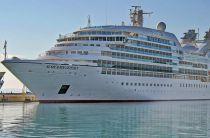
MOL Cruises unveils inaugural voyages for MITSUI OCEAN FUJI
MOL Group's subsidiary MOL Cruises Ltd, operating under the brand name MITSUI OCEAN CRUISES, has announced the debut itineraries for its new ship...
May 25, 2024 - Cruise Industry

First China-built cruise ship Adora Magic City completes commercial maiden voyage
China's first domestically-built large cruise ship, the Adora Magic City, completed her inaugural commercial journey on Sunday, January 7, covering...
January 7, 2024 - Cruise Industry
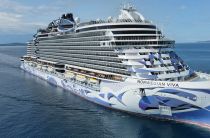
NCL's 2025-2026 cruises: Antarctic itineraries, Breakaway-Plus ships, new ports
NCL-Norwegian Cruise Line has revealed its 2025-2026 itineraries, introducing maiden port calls and homeports for Norwegian Escape and Norwegian Viva...
December 19, 2023 - Cruise Industry

16th China Cruise Shipping Conference commences in Nanshan district, Shenzhen city
The 16th China Cruise Shipping Conference commenced on Saturday, November 25, in Nanshan district, Shenzhen city, under the joint hosting of Shenzhen...
November 27, 2023 - Cruise Industry

53 Chinese cruise ships visit South Korea's Jeju Island in a day
Reservations for cruises bound for Jeju Island in South Korea have surged as China reinstates group tours to its neighboring nation. A Jeju Island...
August 15, 2023 - Cruise Industry
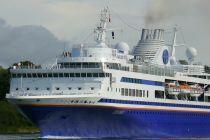
China to restart international voyages from Shanghai in June
In June 2023, China will reopen its international cruise market as part of a pilot program aimed at restoring the industry after the COVID crisis...
May 18, 2023 - Accidents

2021 Asia Cruise Forum JEJU has been cancelled
The Jeju Tourism Organization announced that the "2021 Asia Cruise Forum" planned on August 26-28 at Shinhwa World Jeju Landing Convention Center on...
August 22, 2021 - Cruise Industry
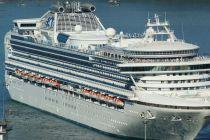
Princess Cruises Announces 2021 Japan Sailings
Princess Cruises announced the remaining 2021 Japan itinerary program, offering passengers an authentic immersion in the history, culture, and...
December 18, 2019 - show more news

 39°F
39°F 
 Mod. breeze
Mod. breeze